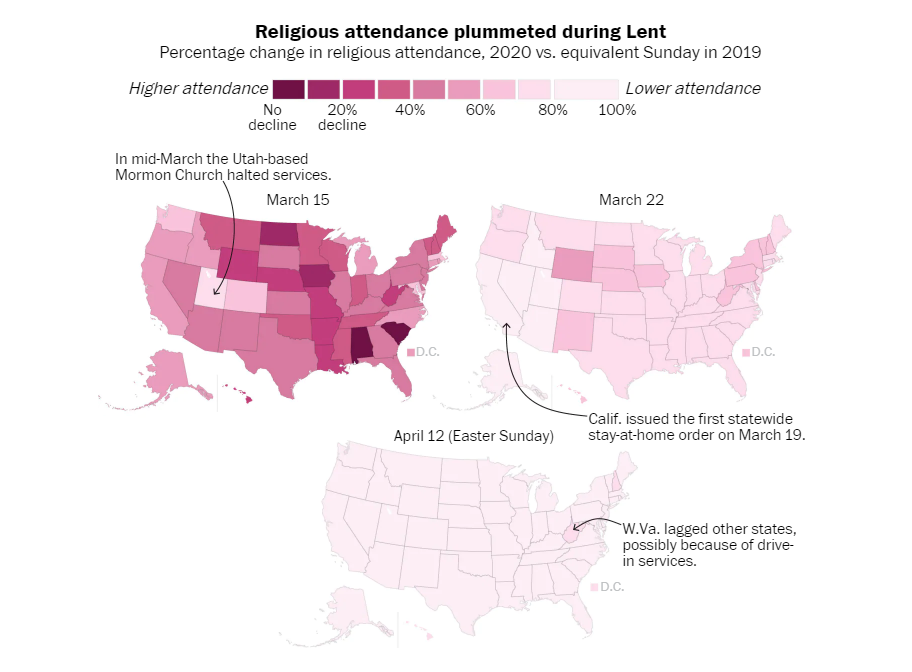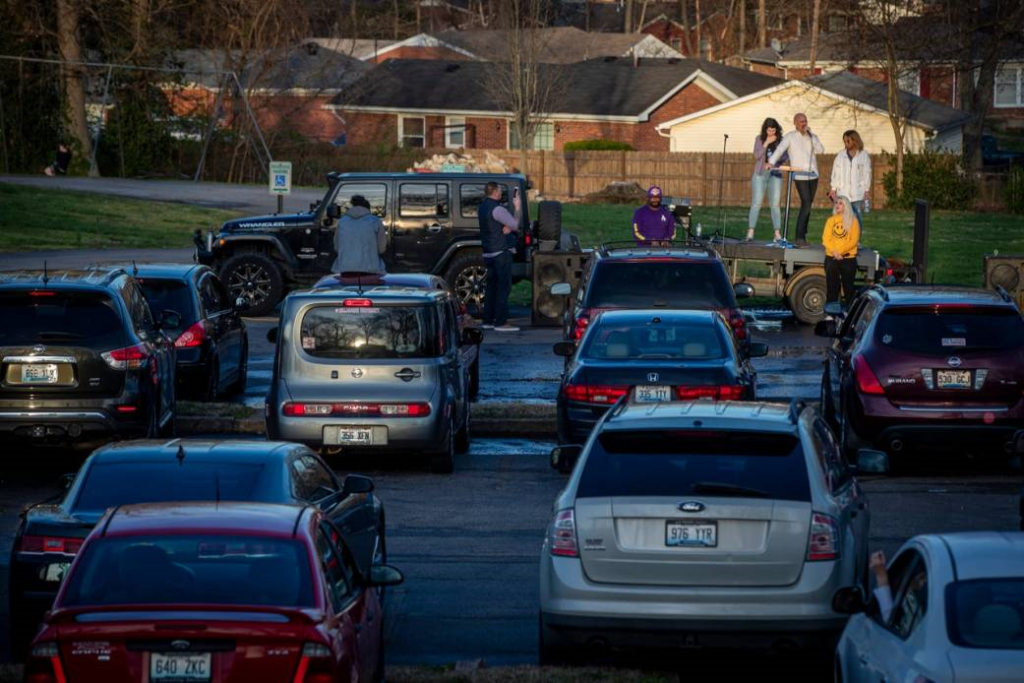According to PRRI (Public Religion Research Institute), ‘a nonprofit, nonpartisan organization dedicated to conducting independent research at the intersection of religion, culture, and public policy,’ around 3% of ‘typically churchgoers’ planned to attend in-person or drive-in church services.
Now the poll is certainly skewed, being based on a relatively small sample size (588 people) and the fact that they define ‘typical churchgoer’ as one who ‘attends religious services at least a few times a year .’
We would suggest that if you’re only attending church a few times year, you’re almost certainly not a Christian.
Still, it does point to the fact that on what is typically a church’s busiest day of the year, everything was closed and everyone stayed home. In fact, of those ‘typical churchgoers’ who were surveyed, 30% of them said they did not plan to attend anything at all.
We are hoping that the Washington Post’s data is a little more accurate. They reported massive drops in all states, with Georgia having the biggest drop in Church attendance at 90%. We cribbed this picture from their website

Using mobile location data provided by SafeGraph, a company that ‘aggregates location data from tens of millions of cellphones devices and compares it with building footprints of all types, including grocery stores, schools and religious organizations’ they report massive drops as well, though not as aggressive. But seeing as their data capture methods don’t specifically target churches, but rather building footprints, their data is less accurate.
At a time with a quarter of the states in the nations have no state lockdown or have lockdowns with religious exemptions, the fact that the overwhelming majority of churches have chosen to cease gathering in person should make us weep.











